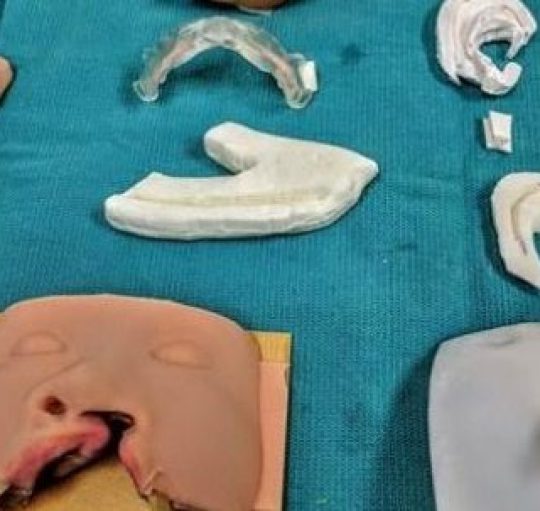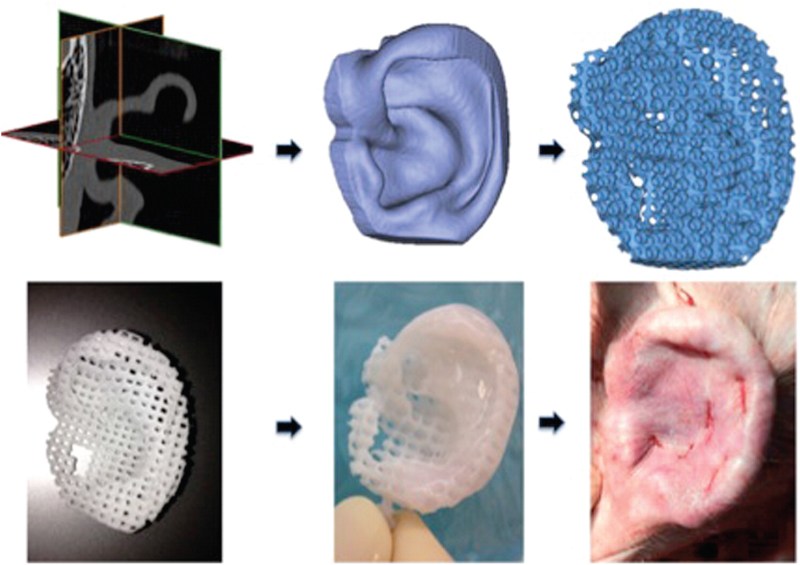
As 3D-printing technology advances, its applications grow—and one of them is downright eerie, albeit necessary.
Surgeons-in-training at the University of Michigan practice their skills on fake body parts made from a printer. The lifelike body parts give medical residents the chance to practice complex surgeries without cadavers.
Reconstructive cartilage grafting, for instance, requires tissue taken from other parts of the body to be carefully sculpted and can only be done once, so surgeons practice multiple times in advance of each surgery.

It’s procedures like this that are improved when students learn on 3D-printed models based on actual patients, according to an article published in Otolaryngology- Head and Neck Surgery.
The technique has been applied to manufacture personalized medical solutions, like tiny splints to keep an infant’s airway open. It’s also been used to created 3D models of fetuses in preparation for complicated birthing procedures.
“3-D printing is bringing a whole new meaning to hands-on experience for surgeons in training,” David Zopf, M.D., the article’s senior author and a pediatric head and neck surgeon at C.S Mott Children’s Hospital, said a statement published in Science Daily.
—RealClearLife
This article was featured in the InsideHook newsletter. Sign up now.





















